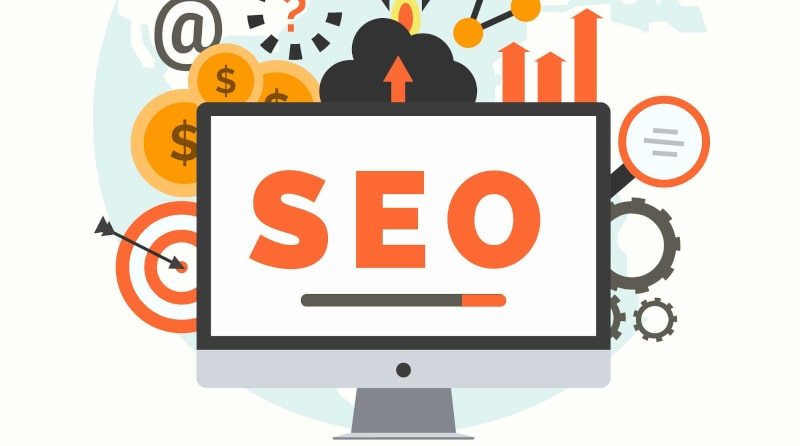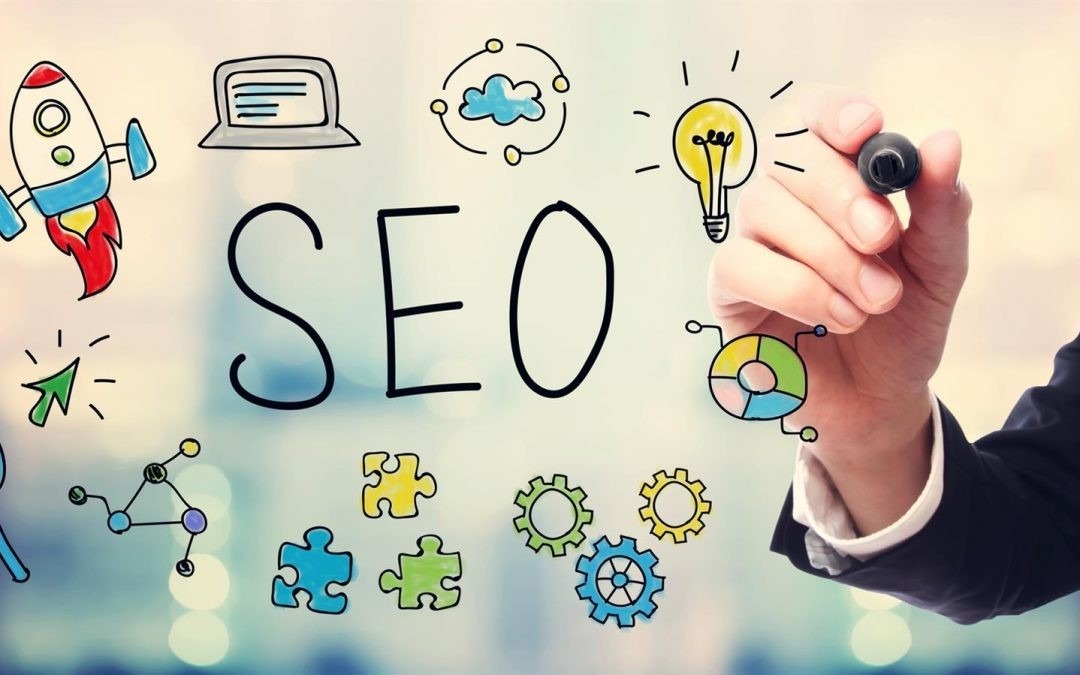SEO For IT and Technology Companies in 2024: Your Ultimate Guide
Paying special attention to the concept of SEO (Search Engine Optimization), one can understand that it refers to the comprehensive development and promotion of websites with the ultimate goal of increasing the site’s significance in the eyes of search engines. The primary focus of seo for tech companies is to increase traffic, which leads to higher rankings in the organic search results of commonly used search engines. To put it simply, it is the technology used to promote a website in order to obtain the necessary amount of traffic, which is always in high demand.
To assist companies in their promotion efforts, high-quality SEO should be implemented, and every stage should be carefully planned. The foundation of this work lies in understanding the algorithms used to rank websites in search results and improving the site’s criteria to elevate it to the top positions. This can be achieved by employing specific and relevant keywords, phrases, individual words, and symbols required for this purpose.
Addressing the question of what SEO represents for technology companies, it is essential to emphasize that it is the most effective technology available today for attracting inexpensive traffic to a website. The principle of its operation is based on the user’s interest in specific queries, and search engines, in turn, accumulate and organize lists with links to websites.

Once potential clients have reviewed a clear overview, they click on one or another link. Through these clicks, the link rises in its ranking positions in search engines and becomes accessible to an even larger number of users. The algorithm, as we can see, is simple. However, to make the optimization process work this way for IT and technology firms, it is essential to take care of many factors:
- Define criteria that have the most impact on the website’s ranking in search engine results.
- Work on website parameters that can improve the ranking process.
- Formulate a relevant thematic core, group words by necessary topics, and redistribute the site’s structure.
- Conduct internal and external search processes aimed at directing the development of the website to the best state.
- Develop the website’s user-friendliness and ease of use, as behavioral factors play a significant role in how search engines assess the site’s quality.
- Gather and analyze statistical data on user transitions to the website from search engines and their actions while using it.
- Adjust the strategic promotion plan by collecting and analyzing information on statistics and dynamics in advance.
Of course, it is necessary to create lists for each individual stage of work, which specialists from different fields and directions (SEO managers, IT specialists, marketers, etc.) will step-by-step carry out.
Why Do Tech Companies Need SEO Services?
Search engine optimization (SEO) is implemented to improve business performance not only for IT agencies but also for technology companies, large corporations, and so on. Since optimization is an ongoing process with constantly changing market rules, businesses should not lag behind these changes. Even better, they should stay informed about the latest trends so that seo for technology companies functions at its best and yields results. When questioning the need for such promotion, five key advantages can be emphasized:
- Long-term impact. The results of implementing basic SEO optimization options will become noticeable within 3-6 months and can last for several years. SEO has a cumulative effect, so the older a online resource becomes, the higher the chances of ranking in top positions. However, it’s not just about the age of the site; it’s crucial to regularly demonstrate to search engines that the resource is constantly evolving (achieved through technology).
- Increased conversion rate. A website for a technology company or IT service agency should encourage users to take specific targeted actions. This includes getting visitors to call back, leave a request for feedback, send a message via online chat, add items to the cart, make a purchase, and even complete the payment. To achieve this, an SEO specialist must identify and fix issues that hinder potential customers from performing these actions (for example, simplifying site navigation, creating a clear structure for order processing, removing irrelevant details from product descriptions, and so on).
- Targeted traffic acquisition. Internet users find the services and products they want to purchase through search engines like Google and others. When they land on a website, they should immediately understand what they can get there. Contextual ad blocks are displayed in response to specific key queries, but the traffic from this source generally converts less effectively than organic (free) traffic, as practical experience shows.
- Saving on a good advertising campaign. If a visitor, upon clicking on a specific advertisement, cannot purchase a product or complete a request, the financial resources spent on attracting that user will be wasted. The main goal of SEO is to provide the visitor with informational data relevant to their specific query. When a website is optimized, it automatically enhances the effectiveness of any type of advertising blocks, making retargeting a viable strategy. This technology helps expand the target audience, and generally, the click-through rate of retargeting campaigns is dozens of times higher than that of regular display advertisements.
- Increasing brand awareness for a technology company or IT agency. It is well-known that SEO can and should be used in conjunction with other marketing strategies. For instance, a simple strategy involves collaborating with SMM agencies, partnering with influencers, purchasing ads on third-party platforms, and so on. However, it is also essential to consider brand-specific queries in the promotion process. For example, when a user lands on the website, they should immediately understand what the company is and what it does, what services it provides, and how it can benefit them. Therefore, when the brand name is mentioned in the homepage description, it is likely to stand out in search engine results, making it easier for the target audience to remember. Additionally, external backlinks can be employed, which can be obtained freely with the help of SEO, using appropriate methods.
SEO also aids in increasing the number of pages in an online catalog, building brand trust, enhancing online resource usability for visitors, and improving the website’s loading speed. Is the technology worth applying? Absolutely, yes, as it is a versatile method suitable for technology companies and IT agencies with entirely different (even highly specialized) fields of activity.

How to choose the right seo agency for Tech Companies
Choosing a competent, qualified, and expert agency in the field of SEO promotion is not easy, as the industry is specific and ambiguous. To meet the expectations and help a technology or IT company, it is important to pay attention to the factor that internet marketing is the agency’s main focus. Additionally, the experts should have numerous case studies (completed projects). The point is that seo for it companies should be their primary area of expertise, not just a “production line of orders.” In other words, professionals should have their own developments, interesting case studies, strategies, experience with backlinks, and so on. With the right approach, competent specialists usually accumulate enough data for well-founded decisions that can benefit a technology company. Therefore, when choosing, it is essential to pay attention to:
- The presence of creative and interesting strategies and the absence of template solutions.
- An individual approach to each client.
- Maximum involvement in the project and, typically, a high level of communication.
- The possibility of signing a contract for the project, which will clearly define the project’s timeline and other important aspects.
- The ability to create high-quality content in technical SEO.
- Knowledge of the latest trends, tricks, and nuances in this field from the “gurus.”
- Skills to implement ideas in practice and a desire to fully understand the client’s business, ultimately creating excellent content for them.
- Financial aspects: the ability to make a minimum payment for the project and post-payment upon completion of the work and the client’s receipt of results.
- The potential for long-term cooperation, especially if the technology company has a young website.

It is also necessary to take a closer look at the reviews of other real clients about the chosen SEO agency, its rating, the presence of a online resource, well-established popular social media accounts, the number of specialists in their team, and so on. It would be great if, at the beginning of the collaboration, the SEO specialist, who will be responsible for the project, outlines an action plan for the future work:
- improve the website’s speed;
- fix errors in the technical documentation;
- implement tags and necessary directives;
- develop a content work structure;
- work on the website’s semantics or semantic core;
- prioritize tasks, from keyword research to content writing;
- set up primary meta-tags;
- purchase high-quality backlink or multiple backlinks, depending on the requirements.
Essentially, the SEO agency taking on the project should provide the client with a well-structured and composed technical task. This document should describe the implementation of technical improvements within specific deadlines, the format of the reports provided to the client, and so on.
Successful SEO Story with Technological Company
Delegating authority to an SEO expert who can achieve success is the first step to take. After all, a specialist can not only select the best seo keywords for it company but also complement and fill gaps in management. In any actively developing technology business, there comes a time when certain responsibilities need undivided attention. Therefore, by hiring a professional SEO agency, you can create a great project. So, a successful optimization story begins with simple steps:
- Handing over the responsibilities to an experienced SEO company that will adeptly handle operational management.
- By shedding the routine workload, you will be able to focus solely on monitoring the process of executing the established technical tasks.
- The improvement and prosperity of the technology firm’s website can be observed during the work of SEO specialists.
- The evaluation of their performance can be regulated at the end, upon completion of the technical assignment.
For a technology or IT company to thrive, it is important to pay attention to the project’s strengths and weaknesses, strive to dedicate time to reading reports on completed work, and delve deep into analytics to implement new and exciting ideas during the process. With a creative approach to the optimization process, real success can be achieved, and all plans can be realized, leading to increased profits and brand recognition overall.

It is crucial that the hired experts are not afraid to be creative, follow the technical task and the client’s personal preferences, generate ideas, prioritize tasks, be energetic, and have the desire to work on the project. For instance, a successful SEO story with a technology IT company is one that is built on principles of daily execution of routine tasks, precise monitoring of deadlines, the ability to analyze information, delegate authority, and share the company’s values with employees and clients.
Guide to Building SEO for IT and Technology Companies
Today, only an experienced technology seo firm can provide search engine optimization services at the level required by IT companies. As the modern market is saturated with various offerings, SEO technology truly stands out. Additionally, the number of people using search engines is constantly increasing. For example, recent statistics indicate that Internet users ask about 4 billion questions every day, covering various fields of interest.
Moreover, it is well known that when an online resource is excellently optimized, it attains high positions in search engine results, gains users’ trust, and attracts visitors, resulting in automatic 24/7 traffic to the website. When comparing search engine optimization (SEO) with other methods of attracting traffic that require constant attention, opting for SEO ensures that nothing is overlooked or lacks the necessary attention.
A step-by-step guide to creating SEO for IT firms will help understand how to effectively implement complex technical phrases and keywords in practice, describe specific processes in this direction, and streamline project creation while achieving outstanding results. By building a technological chain, these firms can establish themselves as true leaders in the industry.

Define Goals, Assign KPIs, and Define Ways To Achieve These Goals
It is crucial not to make the mistake of considering search engine optimization for technical firms as a strategic plan to defeat search engines, especially since most companies lack a well-established working structure. If a tech company seo wants to quickly bring their business to the top, they will still need to define their objectives. A practical example is as follows: you can find a certain keyword and make it the first one for which your business will rank in search results, but you won’t get any traffic or sales of products or services, absolutely nothing. It is better to focus on the following objectives:
- Strive to achieve an increase in clicks and visits to the online resource through organic (free) traffic implementation.
- Generate leads so that potential buyers, not just users, visit the site.
- Create a sales funnel through a marketing structure, implementing a scheme to convert visitors into customers.
- Take care of brand promotion, as the more presence a company demonstrates, the more trust it will ultimately gain.
- Manage the company’s reputation on the World Wide Web, for example, by preventing the appearance of any negative comments towards the brand.
- Achieve set goals through proper target settings (targeted advertising using appropriately selected keywords).
- Serve potential customer by providing only important, honest, and reliable information, addressing common questions, and so on.
It is also necessary to take care of metrics, which will need to be linked to KPIs, to be able to analyze the results of your work. In simpler terms, the goals can vary from creating engaging content for a new and incoming target audience to developing a new website.

Proper Keyword Research
As certain words, specific phrases, and popular expressions form the basis of search engine optimization, it is important to prioritize them. To ensure that an it company seo doesn’t make mistakes when compiling a list of keywords, it is essential to follow a set of actions. Firstly, specialists must identify the words that are most suitable for brand promotion. Secondly, a comprehensive semantic collection must be made based on the target audience interested in the product. What does this mean? It’s quite simple:
- Understanding which key phrases will resonate with and attract people to the website.
- Figuring out the words that users most frequently input when searching for IT services or products.
- Selecting informative queries focused on commercial activities.
- Deciding on the main, high-frequency keywords for the specific target audience.
- Analyzing competitors’ texts to understand which specific queries appear in the top search result.
- Exploring tools related to finding the most commonly used words.
- Giving preference to keywords that users will input most frequently.
In reality, there are specialized programs that assist SEO specialists in orienting themselves and understanding which keywords to use when writing content. Creating a comprehensive list of primary, key, target, and important words is what will help promote the brand in search engine results.

Starting a Content Marketing Plan
It is impossible not to notice that search engine algorithms are becoming more modern, intelligent, and innovative. Therefore, experts have no choice but to develop and implement strictly high-quality, relevant, and valuable content for their target audience. To achieve this, a marketing plan is created, in which all tasks must be thoroughly thought out from start to finish. There are stages that will help develop a marketing content plan:
- Team. First and foremost, it is essential to have a clear understanding of which specialists will be working on the project. Often, for the promotion of IT and technology firms, SEO specialists, graphic designers, marketers, and programmers are involved.
- Semantic core check. Since the website needs to be filled with specific topics that require well-written texts and previously researched and collected keywords, it is crucial to double-check that nothing has been overlooked. In this case, it is better to work with Excel spreadsheets, where lists with phrases, topics, meta-data, and so on can be structured.
- Search for platforms to publish content with keywords. It is important to determine where the prepared content can be published in the future. For example, various blogs, forums, social networks, email newsletters, and other diverse channels are often used.
- Publication schedule. It is important to accurately create a schedule for when and at what time new articles will be released (published), possibly articles that contain a link to the IT or technology company, as such linkable content is highly valued.
- Promotion. This stage is particularly important and determines whether the IT or technology company can rank among the best in its field, whether the website can be in the top search results, and whether launched targeted ads or other advertising methods can interest potential customers, and so on.
A marketing plan is a sequential set of activities regarding products and services, defining goals and providing ways to achieve them. Equally important is content creation – the higher the quality of the written articles, the more goals can be achieved in reality through the created SEO strategy.

Proper Link Building
Quality of the link mass is much more important than its quantity. But how can we understand the high quality of a link? The only thing you need to know about this is that quality is equivalent to the authority of the donor web resource. This means that it is crucial to first consider the content being created, as that is where the link will be placed. There are two approaches that are commonly used by specialists in search engine optimization:
- The need to include material in articles that can be referenced. If the content is well-written, it is doubly good news. The essence lies in the fact that the authors of platforms where articles with links will be placed can boost the ranking of their own sites and help an IT or tech company grow. The key role will be played by the information written in the article, which should be highly effective, useful, readable, engaging, and so on. Some tricks are often used in the created textual material:
- describing specific research on particular topics;
- incorporating high-quality images (infographics);
- writing in a compilation style that attracts the audience;
- creating truly unique, recommendation-worthy content;
- including numbers, advice, and facts in the text that are always of interest to everyone.
- The importance of promoting content to obtain backlinks. Emphasize that the quality of the articles plays a key role in obtaining links. Therefore, if the textual material is poorly written, unprofessional, and of no use, platform visitors will simply ignore it. Content promotion allows you to:
- get more free traffic to the website, which is beneficial for it;
- obtain a larger quantity of backlinks, which improves ranking;
- generate traffic and backlinks, creating a long-functioning ecosystem.
At the same time, it is not necessary to insert a huge number of links into textual materials. It is better to use high-quality links, even if there are only 1-2 per text, rather than low-quality ones that will not yield any results.

On-Site SEO Optimization (Technical Optimization)
Through an internal optimization process, it is possible to achieve indexing of the web resource by search engines and promote positive interaction between visitors and the platform, ensuring that users stay on the website for as long as possible. Bounce rate and time spent on the site are not only indirect but also direct ranking factors. Given these factors, it is essential to pay attention to the following:
- Developing a design solution and adapting the web resource for various portable devices such as smartphones, tablets, and other similar gadgets. Usually, functionality testing is conducted before launching the platform.
- Page loading speed. The online resource should ideally load within two to three seconds to operate at a high speed.
- Creating proper platform indexing. This involves adding information about the site or its individual pages to the databases of search engines.
- Implementing structured data markup. This will enable the platform to appear in search results as rich snippets.
- Optimizing the user interface. This includes creating a well-designed navigation system, aesthetically pleasing menus, and incorporating only necessary filters. This will help visitors better perceive the displayed information on the online resource. Additionally, optimizing other elements such as photos, videos, and other types of content through the optimization process.
Regularly testing the proper functioning of the website on various devices is also crucial. If necessary, the platform can be re-optimized or corrected accordingly.

Evaluation and Re-Optimization
The final stage involves the development of a system that will enable high-quality audits and monitoring of the online resource, as well as the evaluation of the effectiveness of the implemented long-term SEO strategy. To get the website on the initial page of the widely known and highly popular Google search, it requires a significant time investment, typically ranging from six months to a year. For this reason, all specialist actions must be at least sequential. Essentially, it is important to conduct regular evaluations of the following metrics:
- Technical. Ensure proper indexing of the online resource by search engines, check loading speed, optimize the website for mobile devices, and fill all meta-data – tags, headings, descriptions, Alt-text for images and graphics, and so on.
- Textual. Eliminate any errors, whether syntactical, spelling, or grammatical, and provide only relevant, fresh, verified, and highly accurate information. Properly set up internal linking and ensure that the texts align with the visitor’s search intent for a specific goal.
- Effectiveness. Consider the influx of organic (free) and referral traffic, track changes in the online resource’s positions, analyze the link profile, and examine the content’s performance based on various behavioral factors and content conversion rates.
These are the primary metrics that, as a rule, can be periodically adjusted to enhance the effectiveness of the SEO strategy and improve results.

Conclusion
Search engine optimization (SEO) delivers the best results in the “long run” and only in conjunction with a range of additional and essential tools. If a website is being created for an extended period, it is crucial to include SEO in the marketing strategy under any circumstances. This is particularly important when developing an optimization process for IT and technology companies that aspire to become leaders and highly recognizable in the modern market. Thus, SEO has numerous cool advantages: it increases audience trust, attracts targeted traffic, helps achieve high positions in search engine results, brings excellent and rapid growth to IT and tech companies, saves advertising budgets, and in the future, it can even work on its own for a while without updates.



